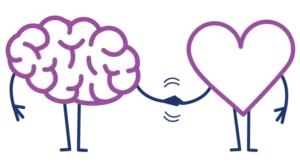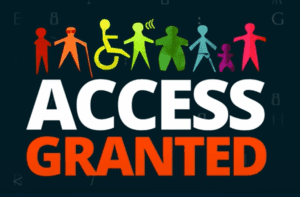
Disability Inclusion – Best Practices
Developed by Ablr
So, your organization has committed to furthering the inclusion of people with disabilities in the workplace. That is wonderful – but this commitment can create a lot of questions and worries about how to interact with people who have disabilities. These concerns are not uncommon, and in this document, you will find practical and specific tips to make teammates with disabilities, as well as yourself, more comfortable in working together. It is intended for co-workers of teammates with disabilities, for their managers and supervisors, for recruiters and other HR personal, for leaders of any organization that has made a commitment to disability inclusion, and for anyone else who might come into contact with your new team member.
The most important thing to remember is that just like anyone else, people with disabilities want to be treated with curtesy and respect. If you keep this in mind, you won’t have to memorize individual rules – the Dos and Don’ts we recommend follow naturally from this desire. Nevertheless, interacting with a person with a disability can seem daunting, and this document gives you a starting point.
The document starts with a few basic rules that apply regardless of the nature of a person’s disability. But people’s disabilities are as varied as the people themselves, and how people communicate and interact often depends on the nature of their disability. The bulk of this guide is therefore broken down into the major types of disabilities. Keep in mind that even within these groups, each person is an individual. You should only take these tips as pointers and adjust them to each person and circumstance.
General
DO work with the individual who has a disability to remove barriers, not for them. People who have disabilities know best what will work for them and can guide you.
DO use language that puts the individual first. People with disabilities disagree among themselves the precise terminology they prefer, but agree that the focus should be on the person, not the disability.
DO inform yourself. Participating in disability-focused initiatives and listening to what people who have disabilities tell you makes you a better ally.
DO speak to the person directly, and not their companion. If the person needs an accommodation to communicate effectively, they will let you know.
DO designate someone to assist the person in the case of an emergency.
DO provide information about meeting content, facilities, etc. ahead of time if possible.
DO NOT underestimate what a person with a disability can do. Many people’s expectations of the activities in which people with disabilities can participate are based on antiquated social norms and misinformation. Don’t automatically count anyone out.
DO NOT assume that a person with a disability always needs your help. People who live with disabilities develop strategies and skills to help them perform all kinds of activities on their own. Offering your help is ok, and you should graciously give it if you are asked, but never force your help on anyone.
DO NOT touch anyone’s assistive devices such as wheelchairs or white canes without asking. Consider these extensions of the person’s body.
DO NOT ask questions about a person’s disability unless it is relevant to your current interaction, or unless you are well enough acquainted. Respect the privacy and dignity of people who have disabilities just as you would anyone else’s.
DO NOT adjust your everyday language – it is not necessary. Yes, blind people watch TV, and people with Spinal Cord Injuries run to the store.
People Who Are Visually Impaired
DO announce your name the first few times you speak to the person, or if you encounter them in an environment where they would not expect you.
DO describe visual information that is relevant to the person, for example graphs and images on the screen during a presentation.
DO make sure that any information that you are distributing is available in a format other than print that is accessible to the person.
DO say something friendly like “Good morning” instead of “Excuse me” when person who is blind is about to collide with you.
DO NOT use vague language like “over there” when giving directions and instructions, but be specific.
DO NOT distract a guide dog who is in harness – the harness means the dog is working. Always ask before you touch the dog, in or out of harness.
DO NOT rearrange furniture or other items without letting the person know.
DO NOT grab onto a person to guide them, but offer them your elbow instead. DO put your hand on the backrest of a chair or tap the table to signal an empty seat at a table.
People Who Are Hearing Impaired
DO get the person before you speak to them by hand gestures, tapping them on the shoulder, or flickering the lights.
DO speak clearly.
DO make sure that you are facing the person, and your mouth is not obscured.
DO make sure that your environment is well lit.
DO consider hiring a sign language interpreter when you are conveying complex information. If you do, DO speak to the person directly, not the interpreter.
DO rephrase sentences that the person does not understand rather than repeating them.
DO let the person know if you do not understand their speech.
DO NOT speak louder. If the person is wearing a hearing aid, it will distort your voice.
DO NOT exaggerate your lip movements. It will make your lips harder to read.
People Who Are Mobility Impaired
DO make sure that the pathways, doors, and ramps remain unobstructed.
DO consider and suggest alternate routes if the common way of getting somewhere contains barriers. DO provide clear signage to mark those routes.
DO make sure that objects the person needs are within their reach.
DO provide specialized furniture to ensure the person’s comfort and productivity.
DO sit down when having a conversation with a person who uses a wheelchair to be face to face.
DO warn the person about obstacles such as wet floors that might impact their movements.
People Who Are Cognitively Impaired
DO use simple, easy to understand language.
DO supplement signs, menus, manuals, and other text with pictograms.
DO be patient and give the person time to process and consider what you are saying.
DO NOT use baby talk. Instead, adjust the pace and clarity of what you are saying.
People Who Have Invisible Disabilities
DO provide information in more than one format to account for learning disabilities.
DO provide an organized, minimally distractive environment to accommodate sensory sensitivities.
DO be aware the flashing lights and violent motion can trigger epileptic seizures and vestibular problems.
DO be aware that hidden disabilities can cause people to tire easily or be in pain, and thus need adjusted schedules.
Takeways
Etiquette tips are meant to make people comfortable with each other, not to complicate anyone’s life. When in doubt, simply remember that the person across from you, like everyone else, values their dignity. Focus on treating them with curtesy and respect and allow them to make their own decisions. Let them show you how to help, should they need your help. Be friendly and approachable, as you would with your co-workers who do not have disabilities. In addition to the tips we provided above, this focus should allow you to interact with minimal awkwardness or discomfort with teammates who have disabilities.
Contact Us
We welcome the opportunity to discuss any accessibility topic with you. Please feel free to reach out.
Email: info@ablr360.com
Phone: 844.304.3265
Website: https://ablr360.com/
4500 Emperor Blvd.
Durham, NC 27703






